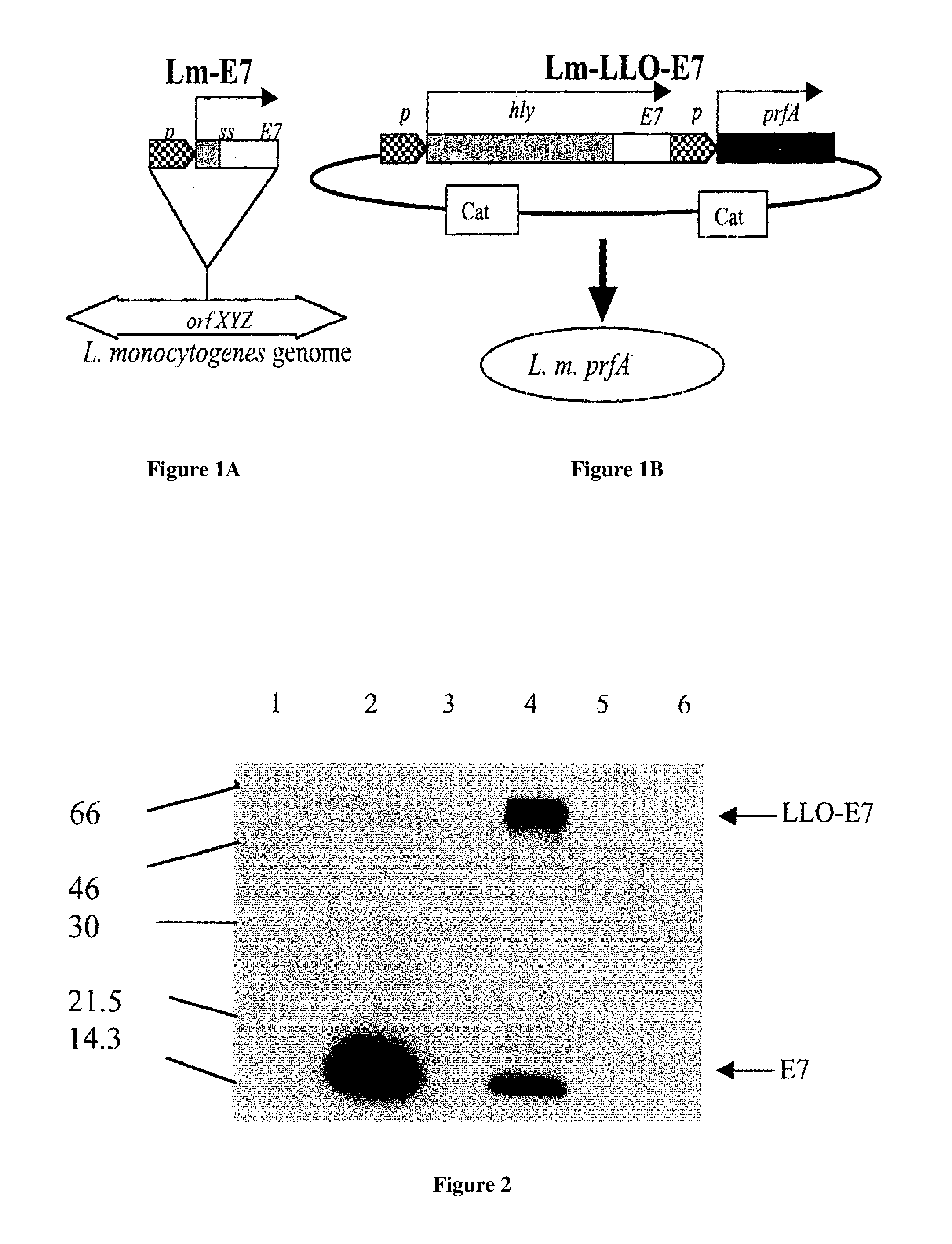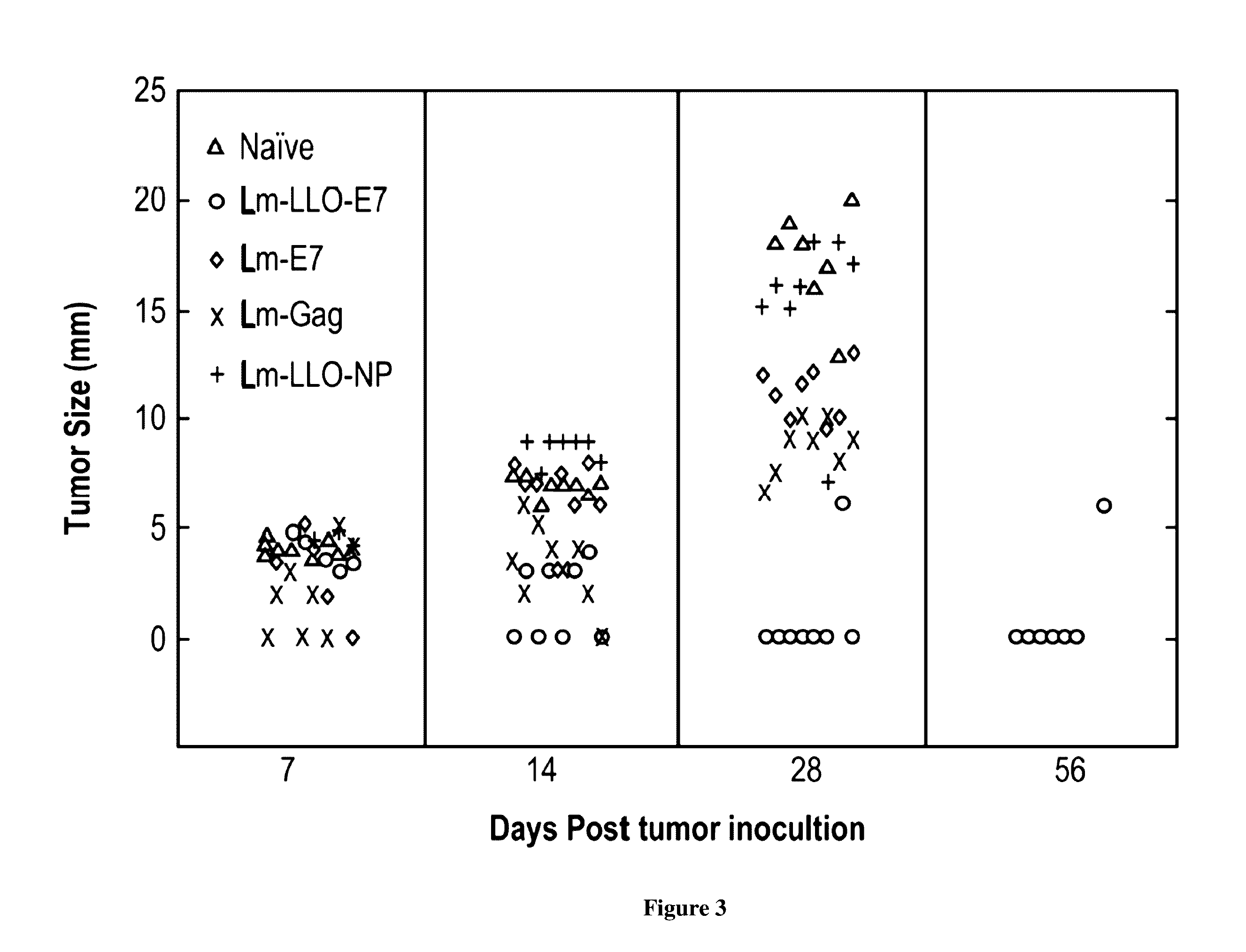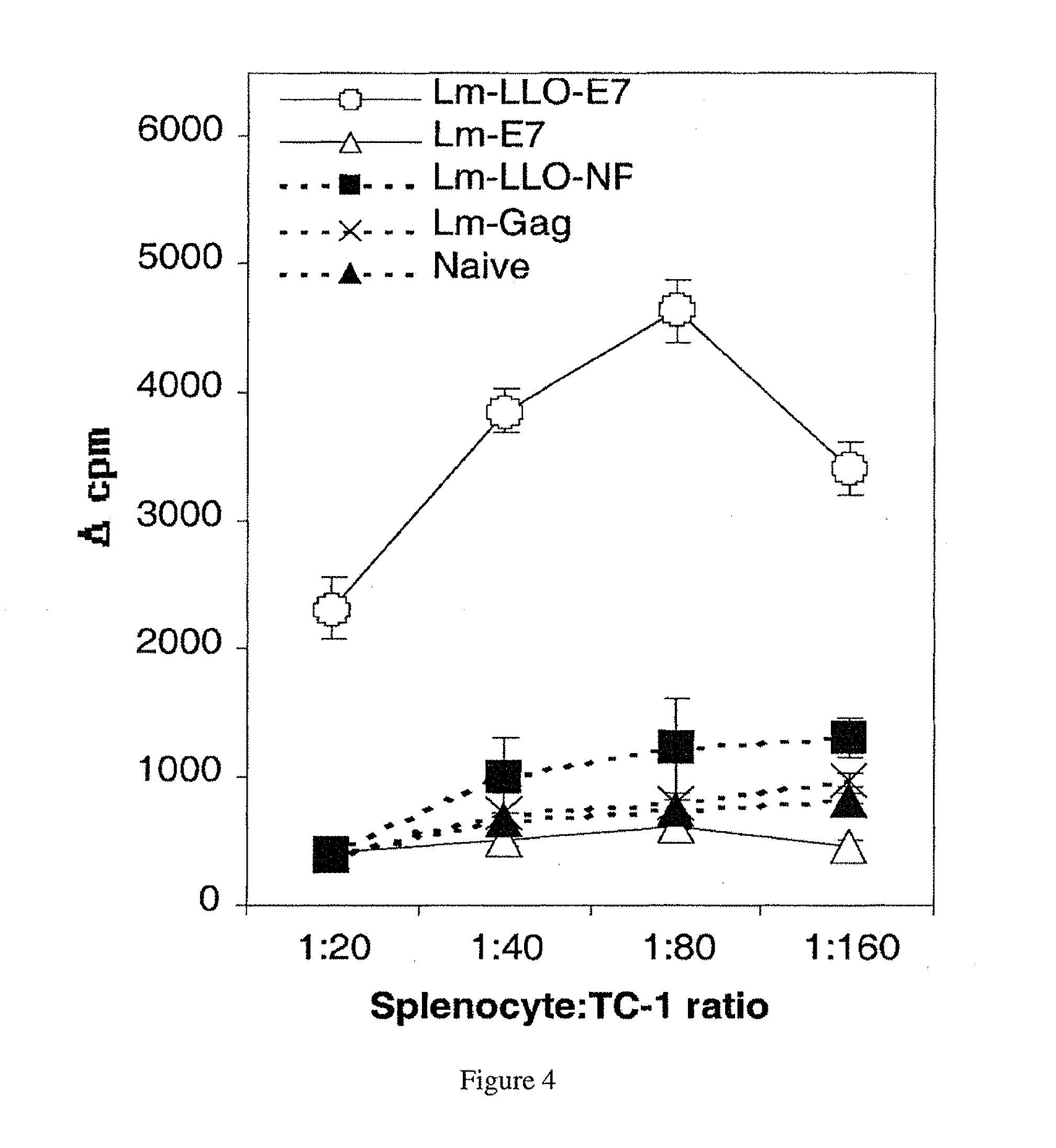Recombinant listeria vaccine strains and methods of using the same in cancer immunotherapy
a technology of immunotherapy and recombinant listeria, which is applied in the direction of antibody medical ingredients, dsdna viruses, drug compositions, etc., can solve the problems of paradoxically increasing the risk of therapy-related long-term poor quality-of-life outcomes for patients with a good prognosis, and reducing the severity of side effects
- Summary
- Abstract
- Description
- Claims
- Application Information
AI Technical Summary
Benefits of technology
Problems solved by technology
Method used
Image
Examples
examples 1-2
Cell Lines
[0191]The C57BL / 6 syngeneic TC-1 tumor was immortalized with HPV-16 E6 and E7 and transformed with the c-Ha-ras oncogene. TC-1, disclosed by T. C. Wu (Johns Hopkins University School of Medicine, Baltimore, Md.) is a highly tumorigenic lung epithelial cell expressing low levels of with HPV-16 E6 and E7 and transformed with the c-Ha-ras oncogene. TC-1 was grown in RPMI 1640, 10% FCS, 2 mM L-glutamine, 100 U / ml penicillin, 100 μg / ml streptomycin, 100 μM nonessential amino acids, 1 mM sodium pyruvate, 50 micromolar (mcM) 2-ME, 400 microgram (mcg) / ml G418, and 10% National Collection Type Culture-109 medium at 37° with 10% CO2. C3 is a mouse embryo cell from C57BL / 6 mice immortalized with the complete genome of HPV 16 and transformed with pEJ-ras. EL-4 / E7 is the thymoma EL-4 retrovirally transduced with E7.
L. monocytogenes Strains and Propagation
[0192]Listeria strains used were Lm-LLO-E7 (hly-E7 fusion gene in an episomal expression system; FIG. 1A), Lm-E7 (single-copy E7 gene...
example 2
Lm-LLO-E7 Treatment Elicits TC-1 Specific Splenocyte Proliferation
[0204]To measure induction of T cells by Lm-E7 with Lm-LLO-E7, TC-1-specific proliferative responses, a measure of antigen-specific immunocompetence, were measured in immunized mice. Splenocytes from Lm-LLO-E7-immunized mice proliferated when exposed to irradiated TC-1 cells as a source of E7, at splenocyte: TC-1 ratios of 20:1, 40:1, 80:1, and 160:1 (FIG. 4). Conversely, splenocytes from Lm-E7 and rLm control-immunized mice exhibited only background levels of proliferation.
PUM
| Property | Measurement | Unit |
|---|---|---|
| diameter | aaaaa | aaaaa |
| size | aaaaa | aaaaa |
| concentration | aaaaa | aaaaa |
Abstract
Description
Claims
Application Information
 Login to View More
Login to View More - R&D
- Intellectual Property
- Life Sciences
- Materials
- Tech Scout
- Unparalleled Data Quality
- Higher Quality Content
- 60% Fewer Hallucinations
Browse by: Latest US Patents, China's latest patents, Technical Efficacy Thesaurus, Application Domain, Technology Topic, Popular Technical Reports.
© 2025 PatSnap. All rights reserved.Legal|Privacy policy|Modern Slavery Act Transparency Statement|Sitemap|About US| Contact US: help@patsnap.com



